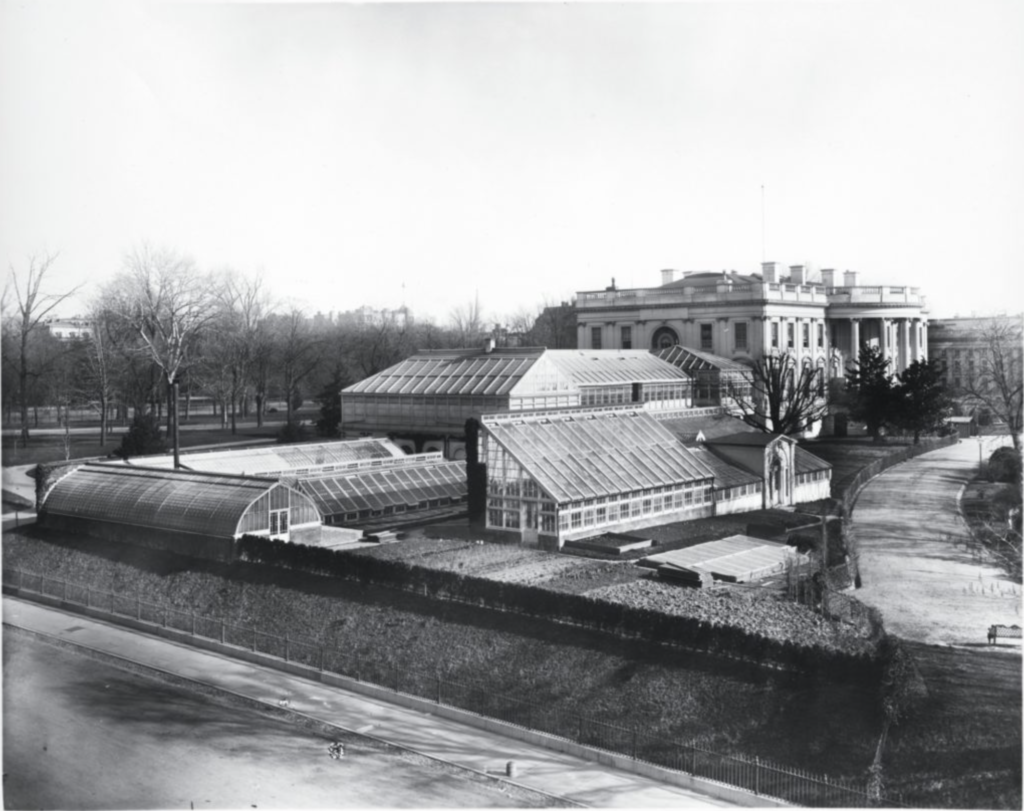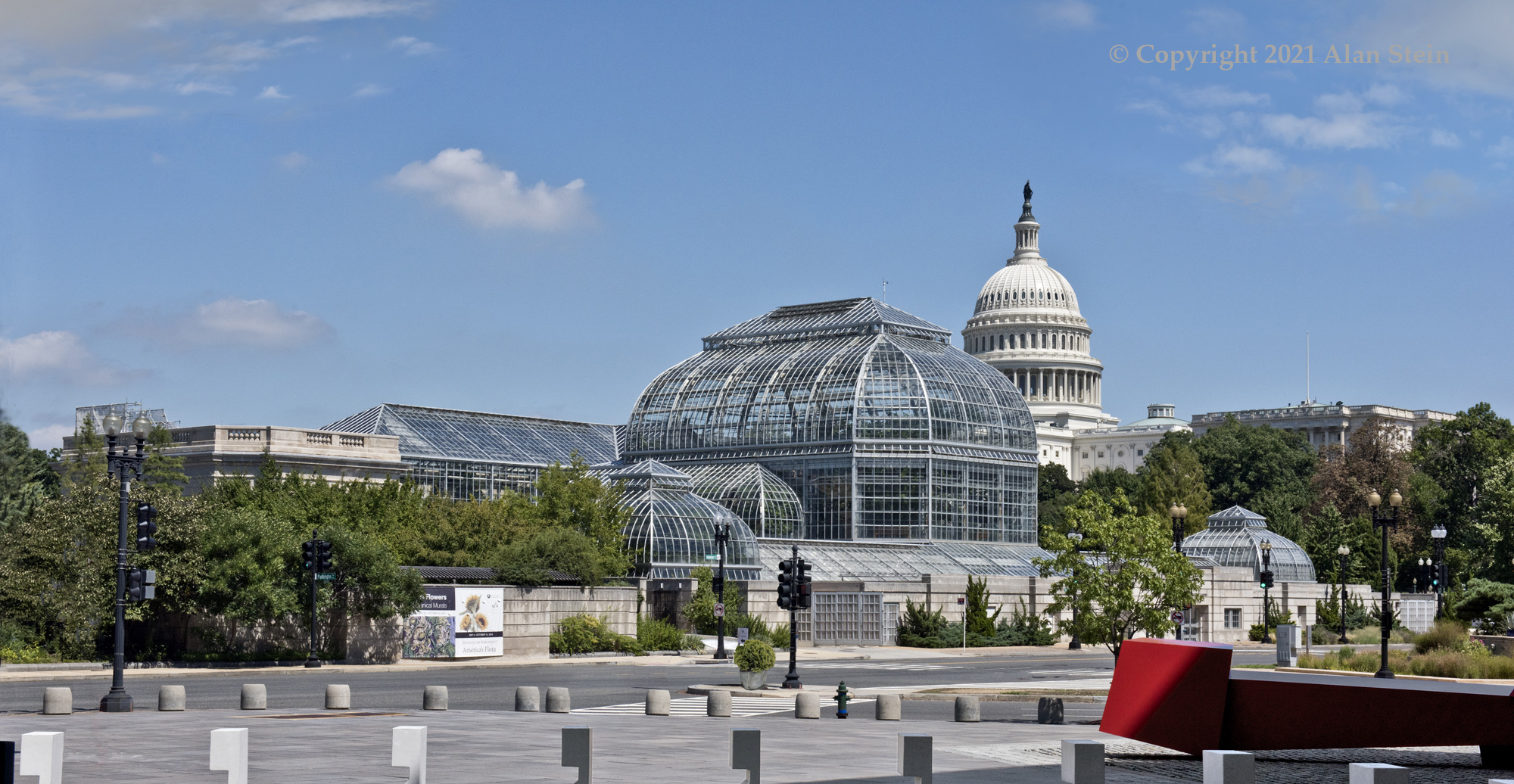Did you know the White House used to have an estate greenhouse?! In celebration of President’s Day, we thought it appropriate to look back on the presidential greenhouses in our nation’s capital during the nineteenth century!
According to Alan and Nancy in their latest publication, The Conservatory: Gardens Under Glass, “…the idea of a national botanical garden was first proposed in 1816 by the Columbian Institute for the Promotion of Arts and Science, a literary and scientific institution in Washington, D.C.” Four years later, President James Monroe (1758-1831) set aside five acres for the “national greenhouse” to be built, but it took almost 18 years for Congress to fund this national greenhouse! What later enticed Congress’s interest in the greenhouse was the United States Exploring Expedition to circumnavigate the globe, whose purpose was to “explore and survey the Southern Ocean…as well to determine the existence of all doubtful islands”, as explained in The Conservatory: Gardens Under Glass. It was during this expedition a large collection of specimens were gathered and soon made up the heart of the present-day U.S. Botanic Garden (pictured above) – designed and built by Lord & Burnham.

Source: Library of Congress
Just as beautiful estate greenhouses and conservatories were highly sought-after additions for European manors, so too was one desired for America’s presidential palace. President James Buchannan (1791-1868) added a beautiful wood-framed greenhouse alongside the state dining room at the suggestion of his niece. Visitors would wander through the private indoor garden where fresh flowers and fruit were often grown for use in the White House.
During Abraham and Mary Todd Lincoln’s time in office, they took full advantage of the greenhouse, not only for its edibles but to build relationships in the community. Mary Todd would use flowers from the greenhouse to “sway political antagonists, reward supporters, and bolster friendships”. Abraham Lincoln was not known to spend much time in the greenhouse, but it is said on the day he was assassinated, he showed a visitor his prize lemon tree in the greenhouse.

Sadly, in 1867 the presidential greenhouse burned down and was replaced by a larger iron conservatory. In the following decades, houses for growing orchids, roses, and camellias were added to the property. However, to make room for the West Wing of the White House, they tore down the conservatories in 1902.
For a more in-depth look at the fascinating history of conservatories, orangeries, and greenhouses, order your copy of The Conservatory: Gardens Under Glass today! You may even find examples of a conservatory or greenhouse you would like to accompany your estate!
To start discussions about adding a conservatory or greenhouse to your estate, give us a call at 410 479 4700 or complete our inquiry form!

